South Australia’s 17 longest prison sentences including bodies in the barrels serial killers, murders and paedophiles
Serial killers, murderers, rapists, paedophiles and the twisted crimes that earned the state the undeserved title of “Australia’s murder capital”.
SA News
Don't miss out on the headlines from SA News. Followed categories will be added to My News.
A spree of cruel, twisted, macabre and gruesome murders, throughout the 1990s and early 2000s, earned South Australia the title of “Australia’s murder capital”.
That moniker was not only undeserved, but wrong – then and now, the NT and east coast capitals far outstrip Adelaide in terms of homicidal acts.
The myth persists, nonetheless, because the biggest crimes committed in SA have an unsettling, even surreal edge to them, with motivations and means equally bizarre.
Those felonious acts have led to lengthy, even record-setting sentences for the worst of the worst – many of whom have strange, unexpected connections to one another.
John Justin Bunting and Robert Joe Wagner
Sentence: Life
Non-parole periods: Declined
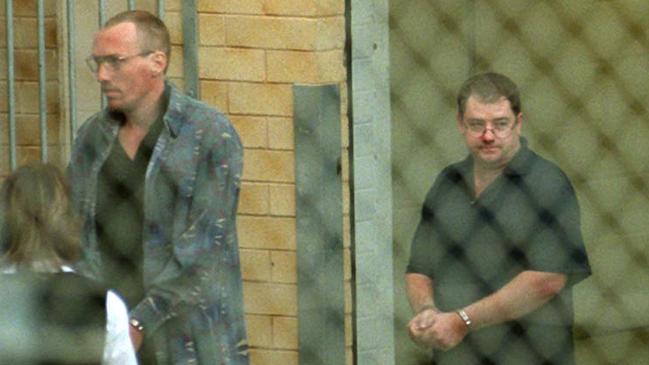
A murder sentence is for life and parole is not guaranteed – there is only a minimum period that must be served behind bars before an offender can apply to be released.
In all of South Australian history, only two men’s files are marked “never to be released” and with good reason, as they are responsible for the state’s most heinous crimes.
John Justin Bunting and Robert Joe Wagner will die in jail for the 11 and 10 murders they committed, respectively, in the infamous “bodies in the barrels” serial killings.
Between August 1992 and May 1999, with the aid of others, the duo deceived, lured, tortured and eventually murdered their victims in truly horrific circumstances.
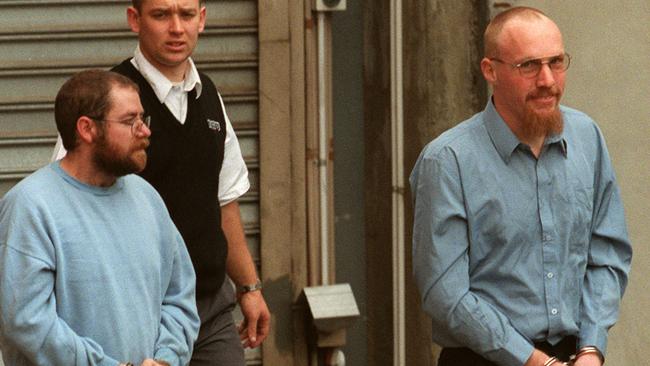
Their subsequent Supreme Court trial heard the duo’s self-claimed motivation was to punish paedophiles – but they siphoned their victims’ pension payments and bank accounts.
They buried their victims’ remains in several places, including a Waterloo Corner backyard and a disused bank vault at Snowtown.
The discovery of the corpses led to the ongoing, erroneous labelling of the crimes as “the Snowtown murders”, despite no killings occurring in the quiet regional town.
That unfair name besmirched Snowtown’s reputation for decades, while the crime spree itself generated the patently false global belief that Adelaide was Australia’s serial-killing capital.
Bunting has never applied for parole but Wagner tried in March 2019 – only to be refused in just 10 seconds by a judge who deemed him “incapable of true rehabilitation”.
Mark Errin Rust
Sentence: Life
Non-parole period: None, detained indefinitely

For a time, Bunting and Wagner shared a cell block with another monster who will never again see freedom – but Mark Errin Rust’s case is somewhat different from his neighbours.
Like the serial killers, Rust is a multiple murderer – he killed Maya Jakic in April 1999, and schoolgirl Megumi Suzuki in August 2001.
He also evaded attention between crimes despite leaving notes for police, anonymously directing them to Mr Jackic’s body and keeping Ms Suzuki’s CD player in his prison cell.
And, like Bunting and Wagner, he is serving a life sentence for his crimes – but his lack of a non-parole period is for an altogether different reason.
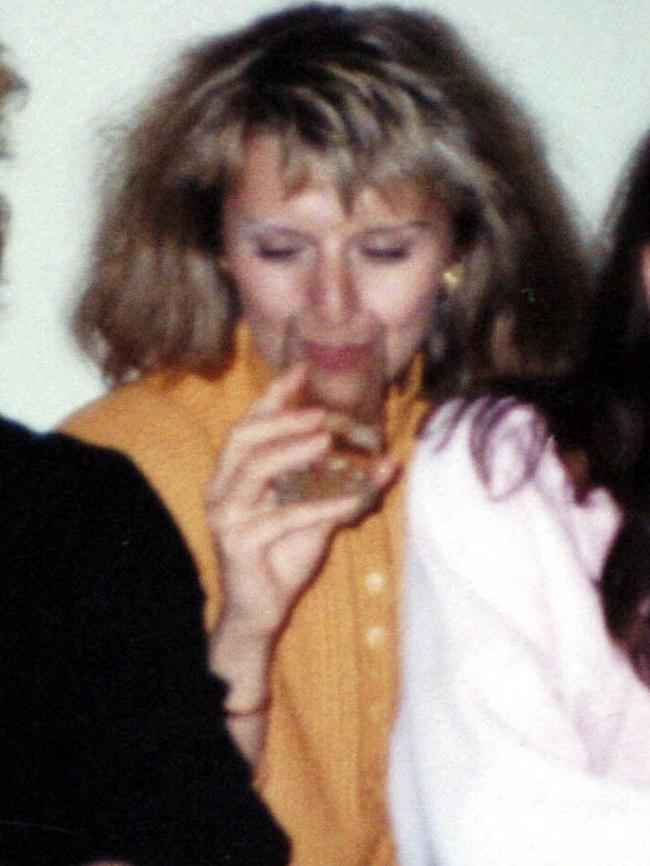
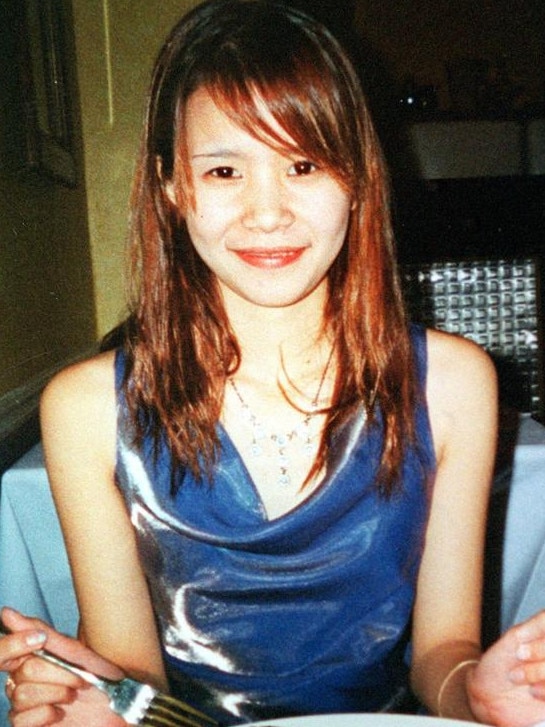
Unlike his grotesque peers, Rust is also a serial sex offender whose 30-year criminal history began with flashing women as a teenager and escalated to multiple counts of rape.
Between murders, Rust raped a woman as she worked late in an eastern suburbs office and sexually assaulted another as she tried to use an ATM.
Those crimes led to the Supreme Court declaring Rust unwilling to and incapable of controlling his sexual instincts, and ordering he be detained indefinitely.
Rust will only ever qualify for parole if two doctors agree he has learned to control himself – something that, in 2015, the court said was very unlikely to happen.
A year later, Rust would complain he found life in prison “particularly difficult” with “no end in sight” – a pitiful plea that, unsurprisingly, held no sway with the court.
Dieter Pfennig
Sentence: Life
Non-parole period: 60 years
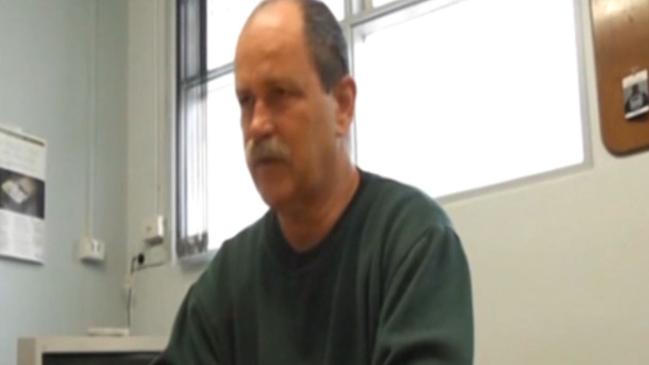
Bunting, Wagner and Rust are unique cases arising from exceptional criminal circumstances and the strange marriage between the law and medical prognosis.
As a result, the longest sentence imposed in South Australian history actually belongs to the man who perpetrated two crimes that traumatised a generation of families.
On January 4, 1983, high school teacher Dieter Pfennig abducted 10-year-old Louise Bell from her Hackham West bedroom.
Louise was never seen again and, despite the exhaustive efforts of SA Police, Pfennig would evade all suspicion for another six years.
In January 1989 a second child – a boy named Michael Black – was abducted from the banks of the River Murray.
Again, Pfennig was responsible and, again, he evaded capture – but only for 11 months, this time, and his arrest for Michael’s murder made him the prime suspect in Louise’s case.
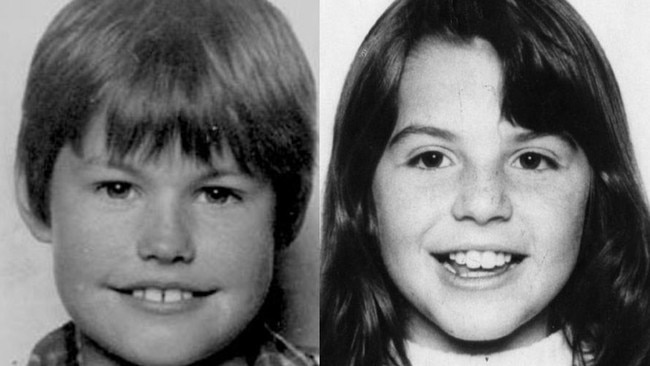
For 23 years, however, those suspicions had no evidentiary basis as fingerprint sampling, handwriting checks and other techniques failed to tie Pfennig to Louise.
In 2012, a key piece of evidence – Louie’s discarded pyjama top – yielded a “one in one billion” DNA match to Pfennig’s genetic profile, and he was charged with her murder.
His subsequent trial was supposed to go for six weeks but spanned 10 months and a challenge to the efficacy of DNA crimefighting worldwide – but prosecutors secured his conviction.
Sentencing Pfennig, who was by then eligible to seek parole over Michael’s murder, was not an easy exercise for the Supreme Court, but it came to an elegant solution.
It ordered Pfennig serve a 35-year non-parole period for Louise’s murder on top of his 25-year minimum for Michael’s murder, resulting in a record 60-year term.
Pfennig will have to live past the age of 100 for any chance of parole, which he cannot seek until New Year’s Eve 2049.
Barry Michael Fyfe
Sentence: Life
Non-parole period: 45 years
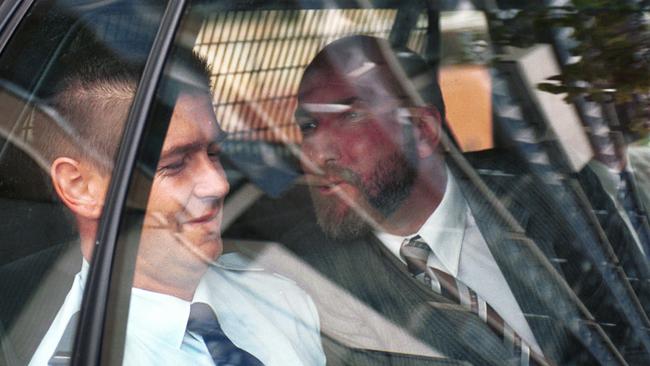
There are, unexpectedly, two strange connections shared by Dieter Pfennig and Barry Michael Fyfe, beyond both being imprisoned murderers.
Both men’s lengthy sentences are hybrids – Pfennig for killing two children, Fyfe for murder and a host of other violent offences, many committed inside the walls of the state’s prisons.
They also have unique relationships with birds.
Pfennig’s trial heard he kept a budgie in his cell that, according to inmate myth, would shit upon his verbal command.
Fyfe had a budgie, too, but it mysteriously vanished from his cell – inmates decided he had eaten it and nicknamed him “the Birdman of Yatala”.
Held in solitary confinement since 1995, Fyfe faded from public attention and, over time, became a lesser-known member of the SA rogues’ gallery.
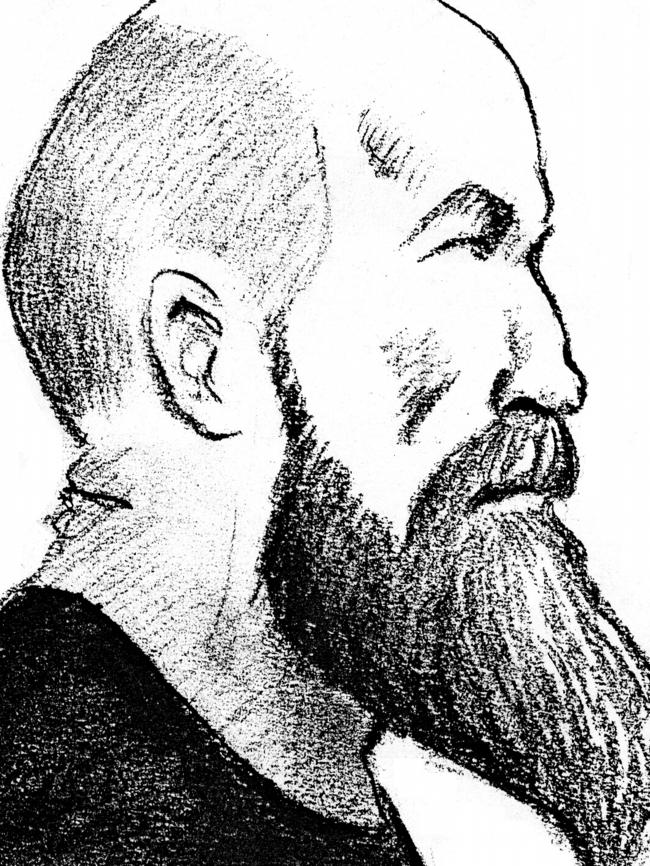
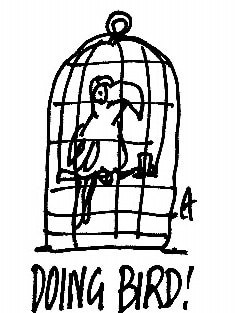
In law enforcement circles, however, he remained notorious – renowned for his hair-trigger temperament, unable to be left alone near sharp objects for fear he’d stab someone.
He has already done that once – turning a stint in the prison kitchen into a back-stabbing, knife-twisting attempt to settle a score with a rival – while serving time for attempted murder.
Fyfe hit the public consciousness in a big way in March this year, when he clocked the dubious honour of becoming Australia’s longest-ever resident of solitary confinement.
Now 61, his 28 years of spending 22 hours a day in a cell are over, as he has been transferred to Port Augusta prison to begin rehabilitation.
He’s even told his story to a podcaster, via 40 phone calls, detailing what solitary is really like – all the while insisting he is in no way remorseful for the actions that put him there.
Steven Graham Peet
Sentence: Life
Non-parole period: 36 years
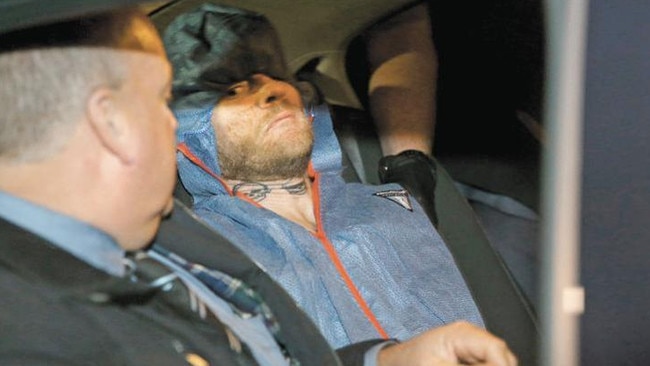
Amber Rose Rigney and Korey Lee Mitchell should not have died – indeed, the people who could have saved their lives were knocking on their door as they were murdered.
Two Child Protection Department workers had gone to check on the children and their mother, Adeline Yvette Wilson-Rigney, on May 30, 2016, but left when no one answered the door.
The children could not answer because they had been bound, gagged and left to die by Steven Graham Peet – who had also murdered Ms Wilson-Rigney, his on-off girlfriend.
Most tragic of all, Amber and Korey were scheduled to be in the care of their loving grandparents, Steve Egberts and Janet Wells, that very afternoon.

The children should have survived, and their traumatic deaths reverberated throughout the state for several years.
Mr Egberts and Ms Wells found themselves unsupported by prosecutors and silenced by the courts, even as Peet tried to claim he was “an automaton” at the time of the murders.
They received another shock when the Supreme Court jailed Peet for just 30 years – a sentence even the killer conceded was too lenient for his crimes.
Fortunately, prosecutors at last rallied behind the family and lodged a successful appeal that saw Peet’s minimum term increased to 36 years.
A subsequent coronial inquest – which ruled the deaths were preventable – started a chain reaction that led to accountability and resignations within the Child Protection Department.
Jason Alexander Downie
Sentence: Life
Non-parole period: 35 years

In the wake of the murders of Andrew, Rose and Chantelle Rowe, a skinny teenager visited the makeshift shrine near their Kapunda home to seemingly bow his head in reverence.
His visit was filmed by nearby television cameramen – none of whom realised they had, in that moment, caught a murderer returning to the scene of the crime.
In the early hours of November 8, 2010, Downie – a Scottish ex-pat known, around the country town, for being weird – broke into the Rowe’s home armed with a knife.
Obsessed with Chantelle, who had done nothing to warrant his unrequited lust, he ambushed and killed all three members of the family and then left, trailing their blood on his socks.
The brazen crime did not just horrify the state, it turned the stomachs of even veteran Major Crime detectives who dubbed the scene the worst they had encountered.


Downie visited the shrine on November 13 and, three days later, was arrested – his guilty plea spared the family’s sole survivor, elder son Christopher, the ordeal of a trial.
It did not, however, save him from a marathon sentencing hearing during which prosecutors recounted the family’s deaths in excruciating, even inappropriate, detail.
In April 2012, the Supreme Court jailed Downie for life with a 35-year non-parole period, saying it would have ordered he serve 42 years if not for his confession.
Neither that sentence, nor Downie’s inevitable deportation to Scotland upon qualifying for parole, could ease Christopher’s grief.
“Nothing changes … it doesn’t matter if he gets one or 100 years, my family isn’t coming back,” he posted to Facebook on the morning of sentencing.
“You (Downie) have destroyed my life and everybody’s life around me (who) cared for and loved my family … whatever you get will never be enough.”
Pawel Klosowski
Sentence: Life
Non-parole period: 34 years

Drunk and infuriated, self-described “monster” Pawel Klosowski retrieved his gun from a locked safe, loaded it and murdered his teenage son and son’s partner – a crime which sent shockwaves around the state.
He chased the young couple – 19-year-olds Lukasz Klosowski and Chelsea Ireland – upstairs at his Mt McIntyre property in the South-East and shot them dead at close range on August 22, 2020.
The couple were trying to pack their belongings after being ordered out of Klosowski’s home.
He first fired at Lukasz before chasing after Chelsea, who had locked herself in the bathroom and called triple-0 to alert authorities.
After the murders, Klosowski then asked his wife if she could “go and have a look” because he thought he had killed his son. He had a blood-alcohol level of 0.22.

At a hearing in the Supreme Court, the young couple’s families confronted Klosowski, labelling him “evil”, sadistic and selfish. They said his crimes were “every parent’s darkest nightmare” and turned their backs and left the court when Klosowski stood to read an apology.
Both families urged the court to impose the harshest possible penalty for their insurmountable loss.
Justice Anne Bampton imposed a mandatory life sentence and said Klosowski had inflicted gut-wrenching pain on the young couple’s families, with his early pleas to two counts of murder “the only mitigating factors”.
She said the “deliberate and purposeful murders” of the young couple who had “made the world a better place” during their cruelly cut-short lives was deserving of a non-parole period of 40 years, but reduced the term by 15 per cent due to those pleas to 34 years.
He appealed against the sentence, but lost, with the court finding his “brutal, execution-style” crimes warranted a “severe sentence”. Klosowski will be 80 before he is eligible for parole.
Jean Eric Gassy
Sentence: Life
Non-parole period: 34 years

On October 14, 2002, just as the “bodies in the barrels” trial was beginning, sirens wailed across Adelaide’s CBD.
An unknown, unkempt, ragged-looking man had pulled twin pistols from beneath his coat, assassinated SA’s top mental health advocate, and then vanished in an elevator.
The manhunt began immediately, with officers following the killer’s trail – starting with the disguise he had disposed of while slipping out of the downtown core.
Detectives would find their prey in Sydney – his name was Dr Jean Eric Gassy, he was a deregistered psychiatrist, and his victim was the very woman who had tried to help him.
Before coming to SA, Dr Margaret Tobin had been Gassy’s boss on the east coast and, as his grip on reality slipped, sought to help him heal and keep his job.
Gassy viewed her empathy very differently, declaring her to be the leader of the “lesbian sisterhood” that wanted to ruin his reputation, take his career and infect him with HIV.

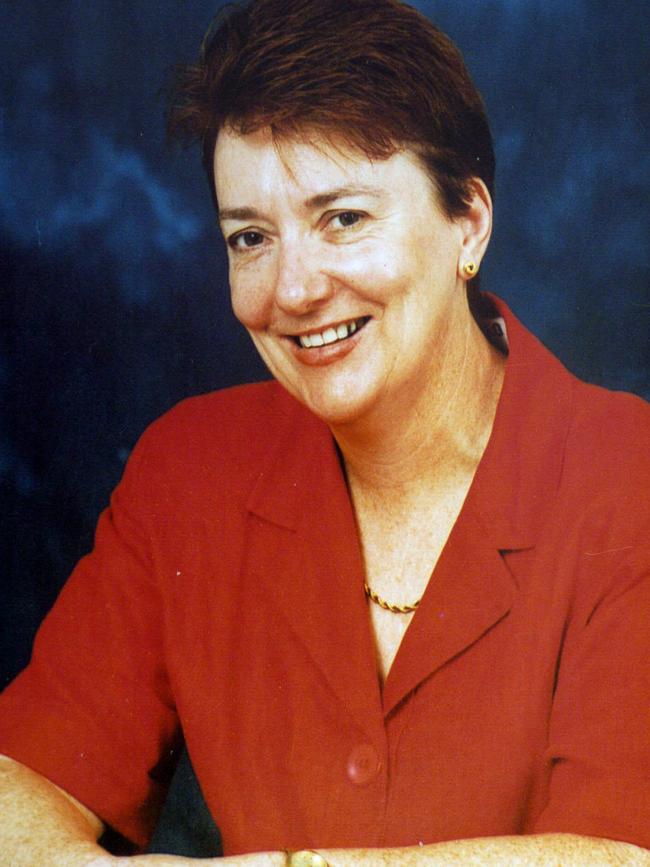
She was one of several people Gassy believed plotted his downfall – he kept their names on a bus ticket and trained in surveillance, disguise and gunplay to assassinate them.
While Gassy was arrested before he could act further on his delusional beliefs, he not only denied all wrongdoing but also insisted he was not mentally ill.
That stubborn position, and his insistence on representing himself against “the adversary”, triggered a series of trials, retrials and High Court appeals spanning several years.
In the end, no jury was prepared to accept Gassy’s bizarre conspiracy theories of “pre-emptive execution” and he was jailed for life with a 34-year non-parole period.
For a time, the delusional assassin faded into history – only to resurface in February 2023 with an equally bizarre application to appeal his conviction.
Gassy told the Court of Appeal that, despite being 13 years outside the statutory deadline for a legal challenge, he needed to be set free because people in prison were trying to kill him.
He had, he insisted, been “subjected to extreme acts of provocation” and “acts of revenge” prior to the murder, and claimed those to be legitimate grounds of appeal.
The court will hear further submissions from Gassy in May.
Jose Omonte-Extrada
Sentence: Life
Non-parole period: 33 years
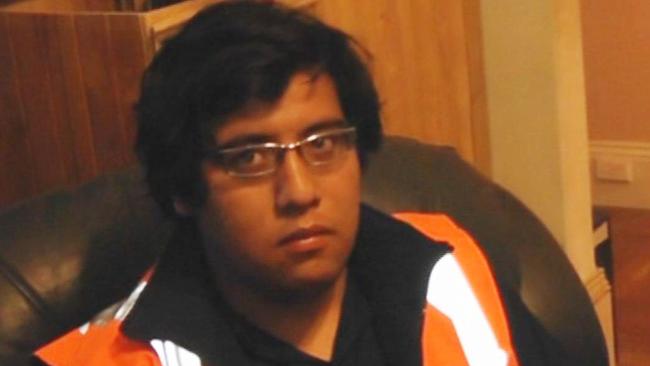
Quorn SES volunteer turned double axe murderer Jose “Enzo” Omonte-Extrada stole one of the brigade’s vehicles – while on his L Plates – to carry out his heinous crimes.
On December 4, 2012, the “chilling sociopath” arranged to meet his former girlfriend Rebecca “Bec” Wild near her school in Port Pirie.
The pair had been messaging on Facebook for almost two years before the then 19-year-old Omonte-Extrada became embarrassed when she posted a status saying she wanted to marry and have his baby.
He packed his SES kit bag – which contained a wooden-handled knife – and put a small axe into the SES ute’s cabin.
After meeting Ms Wild, he asked her to go for a drive so they could “talk in private”, but instead attacked her with a knife 29 times and refused to take her to hospital.
He kept driving as she lapsed into semi consciousness in the passenger seat, until he later stopped the car 130km away near Quorn. She managed to open the door, falling out when he spotted another car driving towards them.
Local woman, Jessie Fullerton, stopped and discovered the seriously injured Ms Wild and demanded he take her to hospital.
Instead, he grabbed the axe, walked up behind Ms Fullerton, killing her as he struck her repeatedly. He drove off with Ms Wild and attacked her with the axe.
“I got frustrated. I just lost it,” he told police.
He later burned her body, towed it to the cemetery and callously dumped her in a shallow grave.
Court hearings revealed Omonte-Extrada migrated to Australia from Bolivia with his father – who found him in an orphanage – after he was abandoned by his drug-addicted sex worker mother.
In sentencing, Supreme Court Justice Trish Kelly said the “narcissistic, self-absorbed” teenager, who was angry at being spurned by Ms Wild, had a “chilling and sociopathic disregard” for both of his victims. She imposed a mandatory life sentence for each of the two murders.
“You have demonstrated that you are a very, very dangerous person to the community,” she told him. He must serve at least 33 years in prison.
Angelika Gavare
Sentence: Life
Non-parole period: 32 years

Only the most keen observer would have noted the young mother who took her children to the Christies Downs creek, every day in December 2008, had a plastic-wrapped package with her.
And only a truly interested party would realise that, when the family returned to their house, each day’s bundle had gone.
Horrifyingly, the innocent creek trips were no mere daily outing – they were a cover for the gruesome aftermath of one of the state’s bloodiest murders.
Angelika Gavare, had killed and dismembered local pensioner Vonne McGlynn, 82, then used her children to disguise the dumping of the body parts.
Driven almost entirely by greed, Gavare wanted to take over, renovate and sell the home of a nearby pensioner, Vonne McGlynn.
After trying and failing to win the canny, independent 82-year-old’s trust, Gavare resorted to brute force – breaking in and killing her with her own statue.

She then assumed her identity, via paperwork, to siphon her bank accounts, cancel her deliveries, pretend Ms McGlynn was on holiday – and set to work on the renovation.
Ironically, it was dismemberment that led to Gavare’s downfall – Ms McGlynn’s replacement hip had a serial number etched into it.
Having identified the body parts, investigating police checked the neighbourhood and found Ms McGlynn’s hall table and toaster oven in Gavare’s home.
Caught out, Gavare tried to blame her boyfriend and her ex-husband for her crime, which prompted her own mother to give evidence against her at trial.
Becoming progressively more unhinged, Gavare sat in court watching her interview with police and laughed at the jokes she had cracked to officers.
In November 2011, Gavare was jailed for life with a 32-year non-parole period – tragically, Ms McGlynn’s head remains missing to this day.
Dudley Davey
Sentence: Life
Non-parole period: 32 years
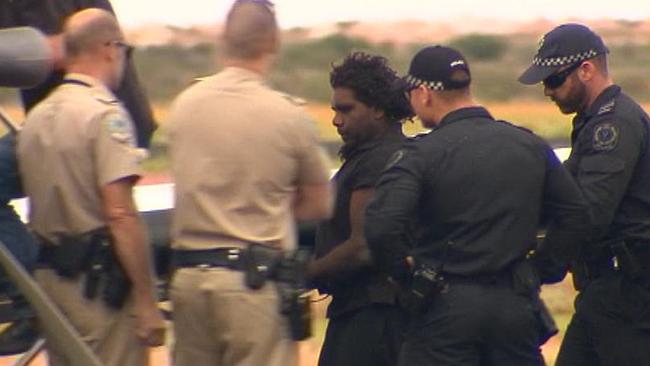
Dangerous repeat violent sex offender Dudley Davey lured outback nurse Gayle Woodford from her desert home at Fregon on the APY Lands in March 2016.
Released from prison just six months earlier and with multiple prior convictions for attacks on women, he was found to have an “abnormal desire to rape women”.
He coaxed Ms Woodford from the secure home she shared with her husband Keith, raped and murdered her before burying her body in a shallow grave, covered by branches.
Ms Woodford, 56, worked for the Nganampa Health Council and was on-call on the night Davey – in the midst of a three-day ice bender – told her he needed her help. He also stole the service’s ambulance.
Her death prompted the creation of Gayle’s Law, which requires any health practitioners in remote areas of SA to be accompanied by a second responder when attending out of hours or unscheduled call-outs.
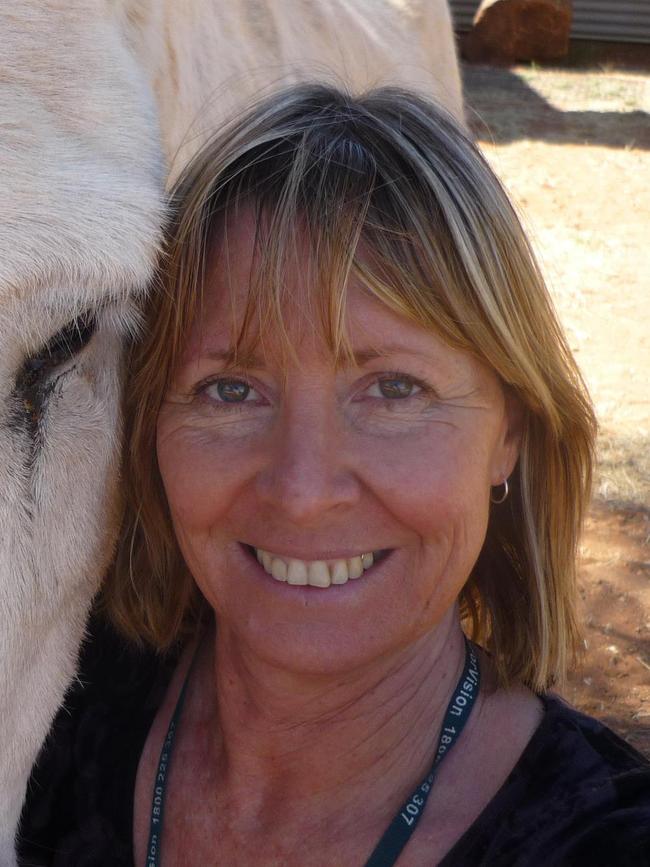
An inquest into Ms Woodford’s death later found her murder could have been prevented if she was not required to treat men alone at night. The inquest had also heard “a catalogue of blunders” left Davey unmonitored by authorities in the months before he attacked Ms Woodford.
In sentencing Davey to life in prison, then Supreme Court Justice Ann Vanstone reduced Davey’s 35-year non-parole period to 32 years after giving him credit for his guilty pleas – the “only mitigating factor” of his crimes.
She said Ms Woodforde must have been “immediately overpowered” and would “not have left willingly” with Davey. Keith Woodford later said Davey “should never, ever be allowed out of jail”.
Edward Yost
Sentence: Life
Non-parole period: 30 years
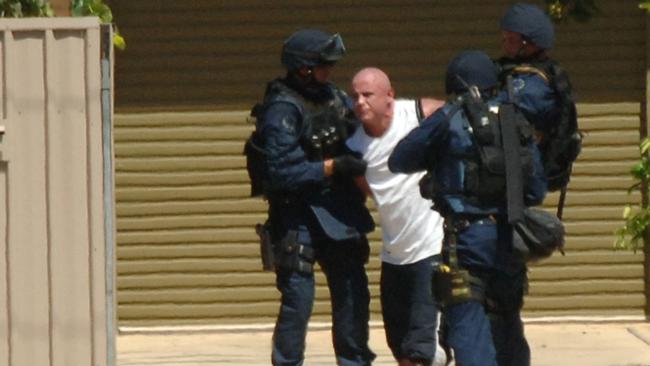
A sadistic killer and rapist – who filmed himself torturing his partner in the years before her murder – was jailed for at least 30 years in 2009.
Former Rebels bikie and state boxing champ Edward Christopher Yost viciously beat his partner, Natasha Jones, to death then left her body to rot in the basement.
Ms Jones suffered years of abuse and torment at Yost’s hands – he would tie her up for days at a time and videoed the torture he inflicted – before she was found dead at their Sleep St, Para Hills home in 2007.
She sought medical treatment for her injuries but never reported Yost to police, fearing he would kill her son in retribution.
Yost went on the run but was arrested after a 23-hour siege, barricading himself inside a suburban Campbelltown house. He later pleaded guilty to a count of murder and sex charges including 10 counts of unlawful sexual intercourse. He had sexually abused a teenager, who cannot be named, between March 2001 and December 2002.
In sentencing Yost to life in prison, then Supreme Court Justice Michael David told Yost Ms Jones’ death was the “inevitable conclusion of your cruel, sadistic behaviour”.
“The tape brought home the immense sadism and cruelty of what you put your victim through prior to the murder.”
Yost later won the right to appeal against the sentence but the sentence was upheld. The non-parole period will expire in February 2037.
Michelle Burgess and Kevin Matthews
Sentence: Life
Non-parole period: 30 years
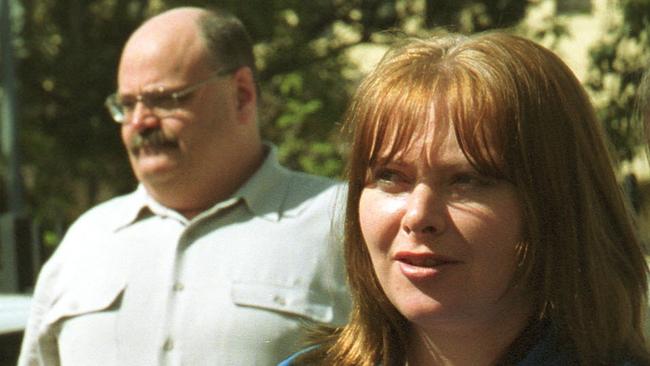
Before Netflix, Stan and Disney+, the coolest thing you could do as a kid was convince your dad to take you to the video store so you could grab the latest movies.
But when Kevin Matthews promised his three sons a school holiday treat on July 12, 2001, it was just part of a callous murder plot arising from a twisted love triangle.
Matthews ensured his wife Carolyn would be home alone so his lover, Michelle Burgess, and hit man David Key could ruthlessly murder her.
He staged his return to the family’s West Lakes Shore home and allowed his sons – then aged 12, 13 and 16 – to find their mum’s bloodied body on the kitchen floor.
It was a merciless crime spawned from Matthews and Burgess’s desperation to continue their affair and cash in on Mrs Matthews’ $100,000 life insurance policy.
They both wanted their spouses out of the way and someone to make it happen.
That man was Key, who was blinded by both money and what he thought was love.
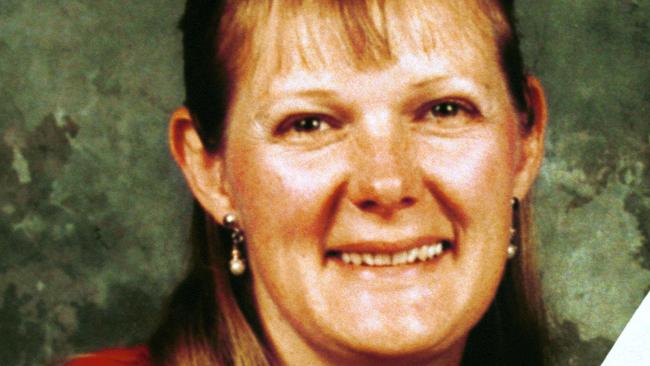
Key, who did not know Matthews was having an affair with Burgess, demanded $50,000 to kill Mrs Matthews and Burgess’s husband Darren – that second murder did not eventuate.
Matthews, unaware Burgess was sleeping with Key, thought he was hiring a hit man for whom Burgess had drawn up the two contracts to have the murders “look like car accident”.
Upon realising Burgess’s betrayal, Key pleaded guilty in return for sentencing discounts and was jailed for a minimum of 20 years.
Matthews and Burgess went to trial, with jurors hearing she had handed her lover a knife and said “be a man, kill her, show me that you love me”.
The duo was jailed for life with a non-parole period of 30 years – but that did not stop Burgess and her predatory instincts.
An Adelaide Women’s Prison officer was forced to quit after becoming involved in a sexual relationship with the insatiable black widow.
Ruecha Tokputza
Sentence: 40 years
Non-parole period: 28 years

He is known as “the child collector” – an insatiable paedophile who marked every day of his adult life with a photograph of himself abusing an innocent victim.
Ruecha Tokputza is, at date of publication, serving the longest sentence ever imposed in Australia for child sex offending.
Over a multi-year period, Tokputza repeatedly sexually violated 13 children in Australia and Thailand – some of whom were just 15 months old.
He was caught, by the state’s elite Joint Anti Child Exploitation Team, with 414 still images he took of his crimes and 251 videos he made, some running in excess of 10 minutes.

He also had 12,500 still images and 650 videos of other men abusing children, all of which he had downloaded from the internet.
Tokputza’s crimes were so voluminous and reprehensible that sentencing him took 75 minutes, with the District Court deeming him worse than Families SA paedophile Shannon McCoole.
A judge completely dismissed Tokputza’s delusional claim he was helping his victims, that they enjoyed his abuse and loved him for his sick acts.
“You are a child’s worst nightmare, you are every parent’s horror, you are a menace to the community,” Judge Liesl Kudelka declared.
“There’s no depiction of ‘love’ as right-minded people know love – rather, it’s all about exploitation, it’s all about you, it’s all about bravado on your part.”
Shannon McCoole
Sentence: 35 years, later reduced to 32 years
Non-parole period: 28 years, later reduced to 26 years
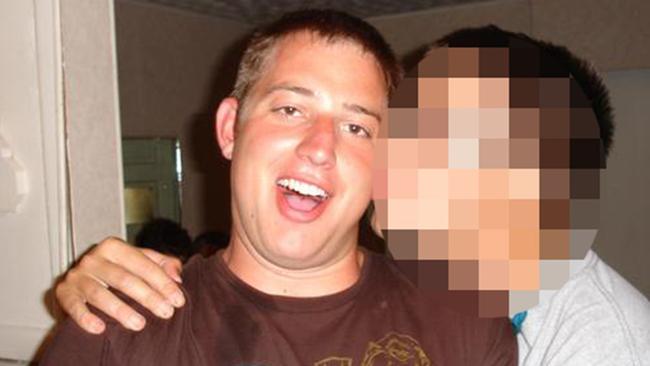
Tokputza is Australia’s worst sex offender but, before he was caught, a man charged with protecting our most vulnerable children was considered their greatest threat.
Shannon McCoole was employed as a social worker by Families SA – now the Child Protection Department – in May 2012.
Two years earlier, he had joined an international child exploitation website and risen quickly through its ranks to become one of its most influential “contributors”.
McCoole started abusing children in his care in January 2011, while working for a private provider, and continued his crimes by victimising Families SA clients until March 2013.

One of those children was just 18 months old, another had autism and a third had disabilities.
Along the way he posted photos of his abuse to the website – which named him its “CEO” – while disgusting his work colleagues with inappropriate comments.
He was questioned, suspended and ultimately reinstated, continuing to offend until SA Police discovered child exploitation material on his computer and arrested him.
The case shocked the state, prompted widespread changes to the child protection system, altered social worker hiring practices and saw McCoole jailed for 35 years.
He was given a 28-year non-parole period, but both that and his head sentence were reduced in 2018 after he dobbed in another member of the website, ensuring that man’s conviction.
More Coverage
Originally published as South Australia’s 17 longest prison sentences including bodies in the barrels serial killers, murders and paedophiles




